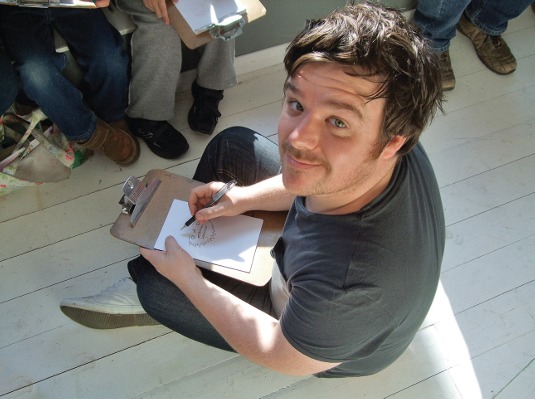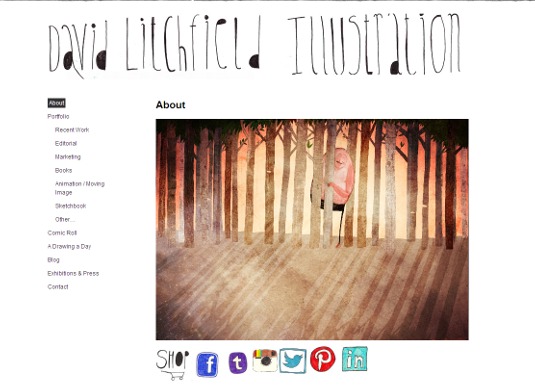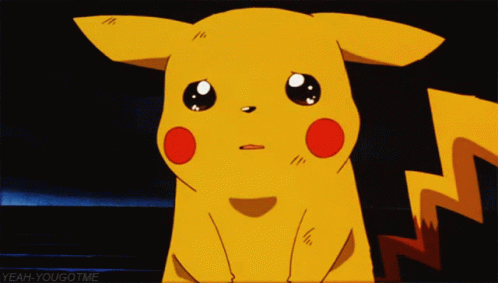David Litchfield on making the jump to freelance
David Litchfield recalls the terror and exhilaration of quitting his design lecturing job to become a full-time illustrator.

Having spent the last two years cramming freelance illustration work into the evenings and weekends around a busy lecturing position, David Litchfield decided it was time to take his illustration practice full-time. He discusses getting his name out there, coping with working alone and the importance of just being nice.
What were you doing before you took the plunge into full-time illustration?
I became a lecturer in art and design not long after graduating from Camberwell College of Art. It was supposed to be a stop-gap job, but I ended up doing it for over five years because, unexpectedly, I really enjoyed it.
How long have you been illustrating?
I first started to draw when I was very young, creating Star Wars and Indiana Jones mash-up comics for my older brother and sister. I have been a professional illustrator for about two years now, and up until recently I was completing commissions in the evenings and at the weekends. It was tough because - despite what my friends believe - teaching is pretty full-on.

Why did you decide to go full-time?
To be honest, it was completely the worst time to do it. My wife and I have an 18-month-old son and we're hoping to buy our first house soon - so, in many ways, I was completely bonkers to give up my steady income. But I knew if I didn't do it then, I never would. Handing in my notice was terrifying and exhilarating in equal measure. I left my boss' office fretting about whether I'd made the right decision. Then, later that day, I received an email from Taschen saying my work had been selected to appear in the next Illustration Now book, which was a huge boost.
What have you found most challenging?
Working from home takes a lot of getting used to. Going from a job were you're constantly communicating with people throughout the day to suddenly being pretty isolated is a bit of an adjustment. Me and a few friends are setting up a studio space locally, which will get us all out of our houses and let us reconnect with humankind - that's the plan anyway.
What new doors have opened for you since moving solely into illustration?
I've been able to try out more techniques and tools. Because time was tight I used to generally stick to what I knew best, but with recent commissions I've been able to play about more with Photoshop and Illustrator. At the moment, I'm working on writing and illustrating a children's book, Grandad's Secret Giant, and developing a short animated film.
What advice would you give to anyone thinking about going freelance?
The important thing is to let people know that you exist. It sounds funny and obvious but so many designers assume that people will find you and throw opportunities at your feet. Probably the best piece of advice I've heard is from the founders of The Makerie Studio, and that is: "Just be nice to people". I think that's very good advice indeed.
Daily design news, reviews, how-tos and more, as picked by the editors.
This article originally appeared in Computer Arts issue 223.
Liked this? Read these!
- Illustrator tutorials: amazing ideas to try today!
- Photoshop tips, tricks and fixes to try today
- Amazing examples of experimental design

The Creative Bloq team is made up of a group of art and design enthusiasts, and has changed and evolved since Creative Bloq began back in 2012. The current website team consists of eight full-time members of staff: Editor Georgia Coggan, Deputy Editor Rosie Hilder, Ecommerce Editor Beren Neale, Senior News Editor Daniel Piper, Editor, Digital Art and 3D Ian Dean, Tech Reviews Editor Erlingur Einarsson, Ecommerce Writer Beth Nicholls and Staff Writer Natalie Fear, as well as a roster of freelancers from around the world. The ImagineFX magazine team also pitch in, ensuring that content from leading digital art publication ImagineFX is represented on Creative Bloq.
